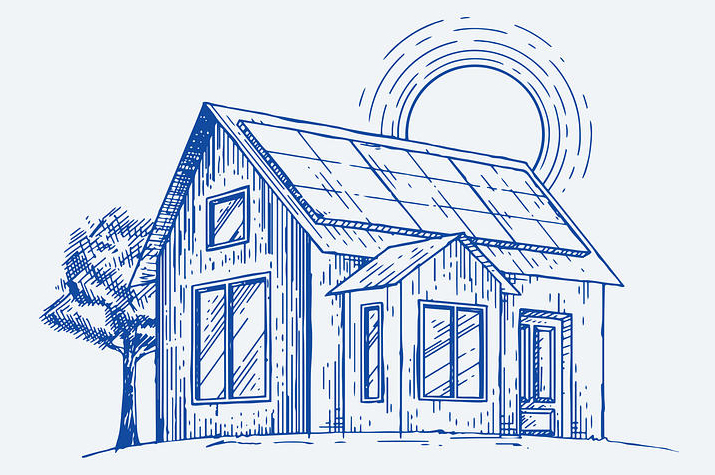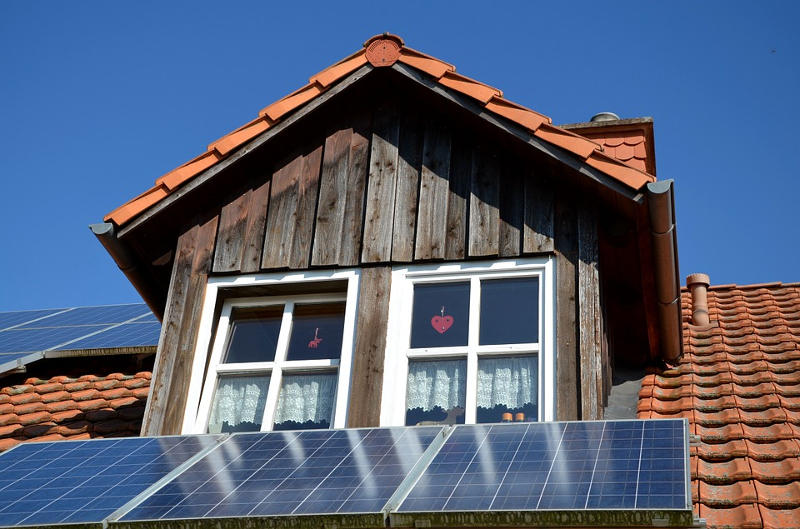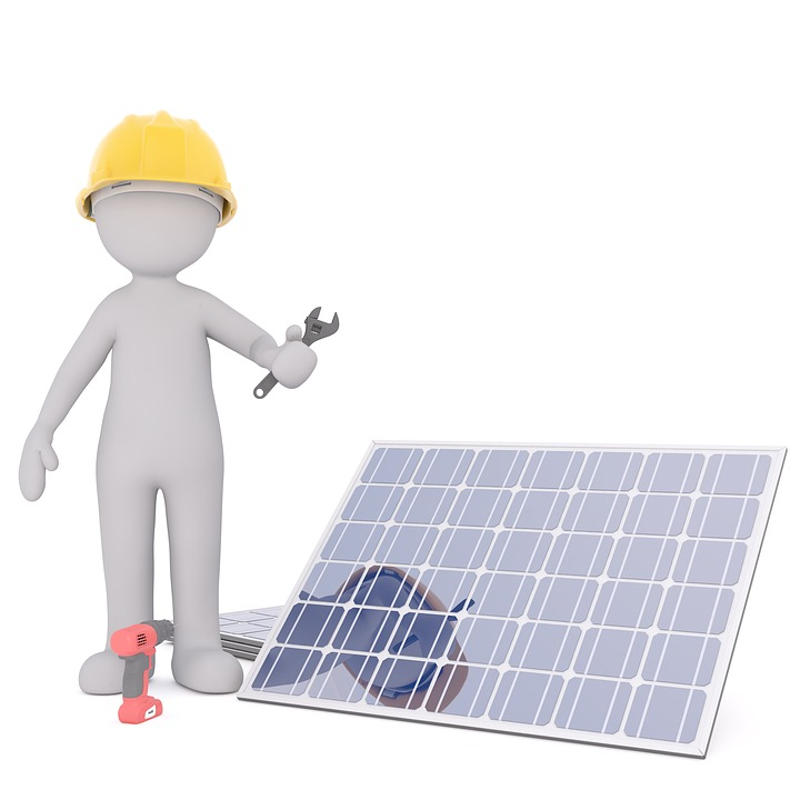Resource Guide to DIY Solar Panels
Have you been considering DIY solar panels to power your home? More homeowners are beginning to give serious thought to installing solar panels on their home to help the environment and to reduce utility costs. DIY solar can be a great option for a homeowner looking to increase those savings even more by using DIY solar panels to cut out the middleman. Learning how to build a solar panel isn’t easy, but for those with some construction and electrical skills, it can be a rewarding challenge that will save a lot of money on powering your home in the future. This resource guide will walk you through the process of getting started with DIY solar power and includes information on how to make a solar panel, the best DIY solar kits on the market, and even how to DIY a solar generator.
According to a Pew Research survey, here are the main reasons homeowners are considering solar at home:
- 96% to save money on utility bills
- 85% to help the environment
- 67% to get a solar investment tax credit
- 60% because it would be better for their own/their family’s health

Not only can solar power save you money, but it can also boost your home’s value by up to 4.1%. Some states are requiring that all new homes have solar panels on their roofs, while others offer very high solar premiums, leading to a demand for homes with solar panels. Explore the sites below to see how much DIY solar panels could help you save on your home.
- Database of State Incentives for Renewables & Efficiency(DSIRE) — This comprehensive list of solar policies and incentives by state has each state color-coded according to the number of programs it has. California, Michigan, Texas, and New York have the most policies and incentives in the country.
- Renewable Energy Tax Credits — Apply for renewable energy tax credits through the Energy Star program, which offers credits to those with solar energy systems on their existing homes or new construction.
How to Build a Solar Panel

You’ve done the research on the benefits of solar power and looked into the cost savings that making solar panels can provide, and the time has come to put your plans into action. But now, you’re wondering how to build your own solar panels so that they will be able to efficiently power your home or off-grid project. We’ve found some great resources to use when you begin the challenge of building solar panels.
First, you’ll need to decide which type of solar power system you are going to make your own solar panels for. What are you trying to achieve with DIY solar power? Saving money, going off-grid, or using solar for backup power can all require their own specific solar power systems. While all of these systems are made from similar components, their differences can drastically affect the cost and complexity of the project.
- Grid-connected solar power systems are tied to the electrical grid and can work without a backup battery. This is the most common type of solar panel system used and requires less equipment, which makes this the least expensive solar power option, although its downfall is the lack of backup power.
- Off-grid solar power systems operate independently of the electrical grid. This type of solar system requires many solar panels and a large battery to maintain constant power for the home, even when the weather is overcast, leading it to be the most expensive option for a solar power system.
- Hybrid solar power systems are connected to the electrical grid but also have a backup battery system that can be used to store power, making them more reliable and more expensive than a grid-connected system.
Next, you’ll need to look into the solar rules and regulations where you live. They can vary greatly depending on which state or even local jurisdiction you’re located in. Some states do not allow solar systems to be connected to the grid unless the installation was done by a licensed professional.
-
National Solar Licensing Database — The IREC has compiled each state’s licensing requirements for solar installations and continually updates them to remain current.
The next step in the process to build your own solar panels is to design the appropriate solar system for your setup. Below are some tools and sites that can be beneficial in the designing process.
- Checklist for Installing Your Own Solar Panels — This checklist was created by two professionals in the solar and construction industries and acts as a litmus test for whether building your own solar panels is the right step for you to take.
- DIY Solar Panels: What You Need to Know — EcoWatch explores if the challenging task of building your own solar panels is worth it and shares the pros and cons of DIY solar panel installation.
- Ten Essential Tools for DIY Solar Installation — Unbound Solar shares ten tools that are essential to the DIY solar panel process.
- Solar Panel Calculator — GoGreenSolar’s calculator uses your ZIP code and the number of kilowatt-hours (kWh) you use every month to determine how many solar panels you will need to build to power your home.
- Average Annual Sunshine by State — Find the average number of sunny days your state or city has every year, which can help you decide which type of DIY solar power system would work best for your location.
Now to learn how to make your own solar panel! We’ve found some handy guides to get you started:
- Learn Hub: Do-it-Yourself Solar — This guide from Unbound Solar covers everything you need to know to build your own solar panels, including planning, system design, and setting them up, and they even offer free DIY solar workshops.
- How to Build a Solar Panel From Scratch — The Solar Guys share how to make a solar panel in 11 detailed steps along with a list of materials needed to make a solar panel at home. They also include how to build a battery bank to complement a DIY solar panel.
- How to Build a Solar Panel — This free Instructables video shows how a college student studying computer engineering built their own solar panel from scratch.
DIY Solar Kits

Now that DIY solar panels for home have begun to grow in popularity, it's easy to find DIY solar kits for different amounts of power with pricing for every budget. Big-box stores like Home Depot or Lowe's carry solar power kits, and you can even order one of Amazon’s solar kits to be delivered right to your door. Here are some of the best kits for building solar panels on the market:
- Grape Solar Kits — Grape Solar is one of the main manufacturers of DIY solar kits for both grid-connected and off-grid systems. They can be engineered to match your specific power generation requirements, allow for future expansion, and can withstand rugged off-grid conditions.
- Unbound Solar System Kits — Unbound Solar offers a wide variety of DIY solar kits for both grid- connected and off-grid setups. Their DIY solar panels have a wattage range of 5 to 445, while their complete kit’s monthly output ranges from 192 to 16,650 depending on if it’s meant for off-grid or grid-connected use.
- Renogy Solar Kits — Renogy is a manufacturer that offers off-grid options for DIY solar power for your RV, van, boat, or home. Their starter kits are great for someone who is building solar panels for the first time, while their premium kits are tailored to more experienced users working on advanced applications.
- GoGreenSolar: Solar Panel Kits — The GoGreenSolar DIY solar panel kits can be either roof-mounted or ground-mounted, and each kit comes customized to your energy needs and home’s unique specifications. These DIY solar kits come with everything needed for a complete installation, making them easy for you or a contractor to install.
- WindyNation Solar Products — WindyNation sells a wide variety of the parts you’ll need to build your own solar panels, including solar cable and wiring, linear actuators, mounting hardware, solar trackers, and much more.
How to Make a DIY Solar Generator
Once you learn how to make a solar panel, you’ll be able to use it to then create a DIY solar generator, which is a portable power source that is self-contained and independent from the grid and can be used to power things like small appliances or power tools. Solar generators are also much quieter than your standard generator. Below are some instructional resources that can help you learn how to build a solar generator.
- Build a Solar Power Generator for Under $300 — Yes, you read that right: You could make a DIY solar generator for just $300! And it can be done in just eight easy steps with these instructions from HowStuffWorks.
- How to Build a DIY Solar Generator (3,000 Watt) — If you’re looking for more thorough instructions on building your own solar generator, then this five-part series from Modern Survivalists is for you.
- Complete Instructions for How to Build Your Own DIY Solar Generator — These instructions from Green Citizen go into detail about all of the components you will need for a DIY solar generator and are supplemented by videos, which are great for more visual learners.
Has this guide inspired you to build your own solar panels to power your home? It can be a challenging but very rewarding process!